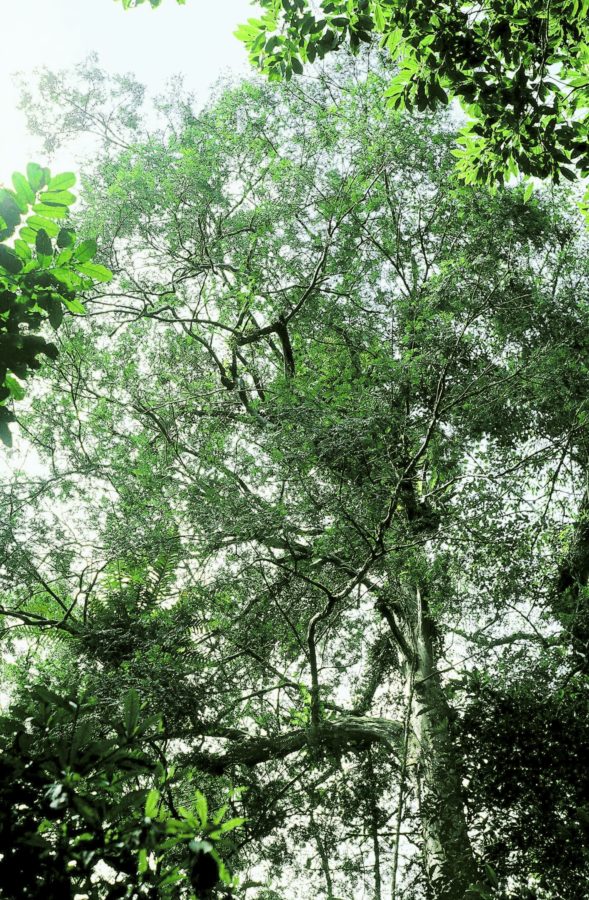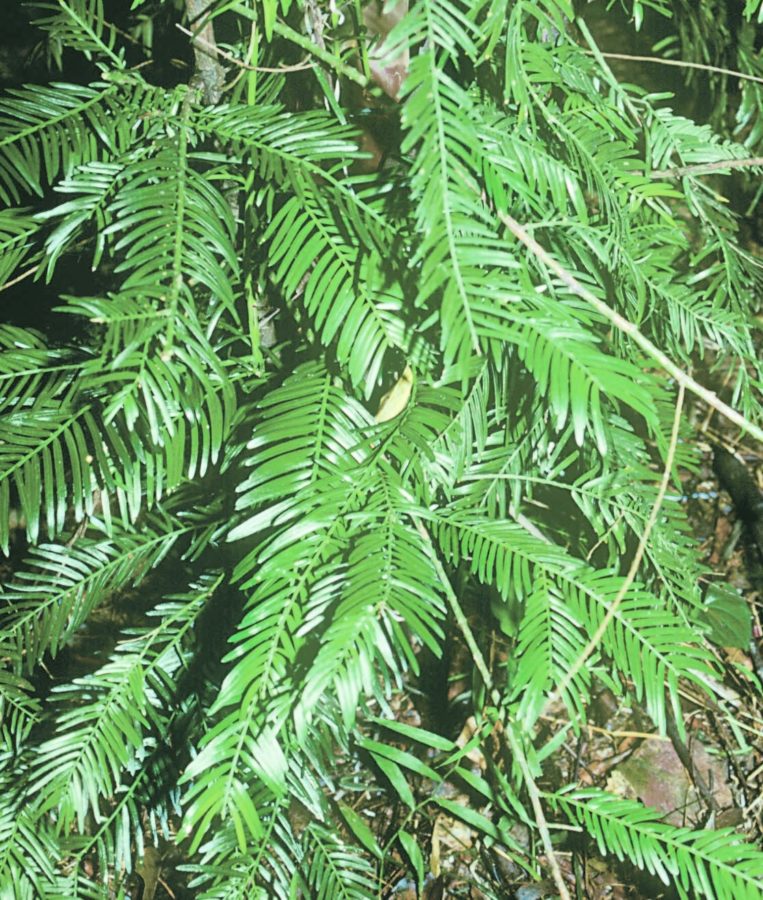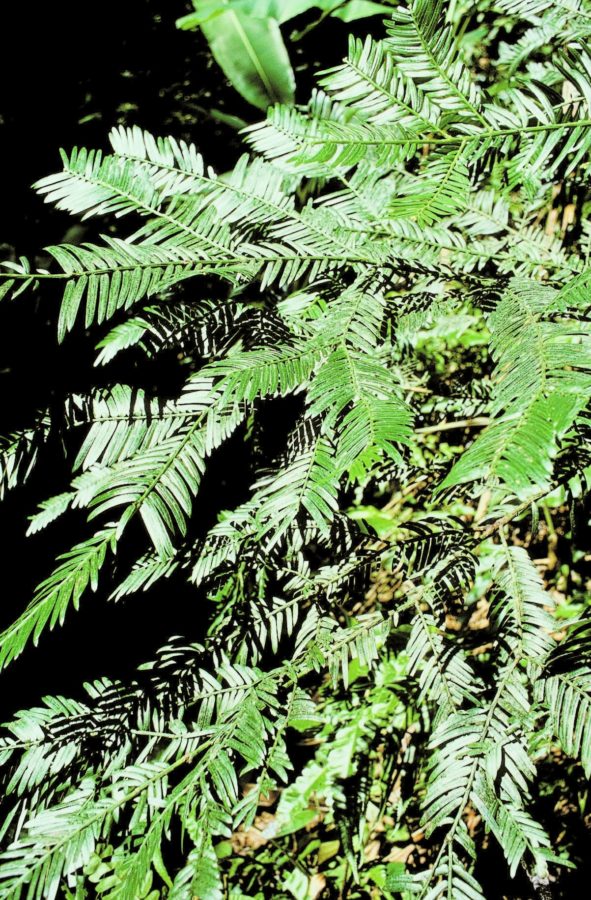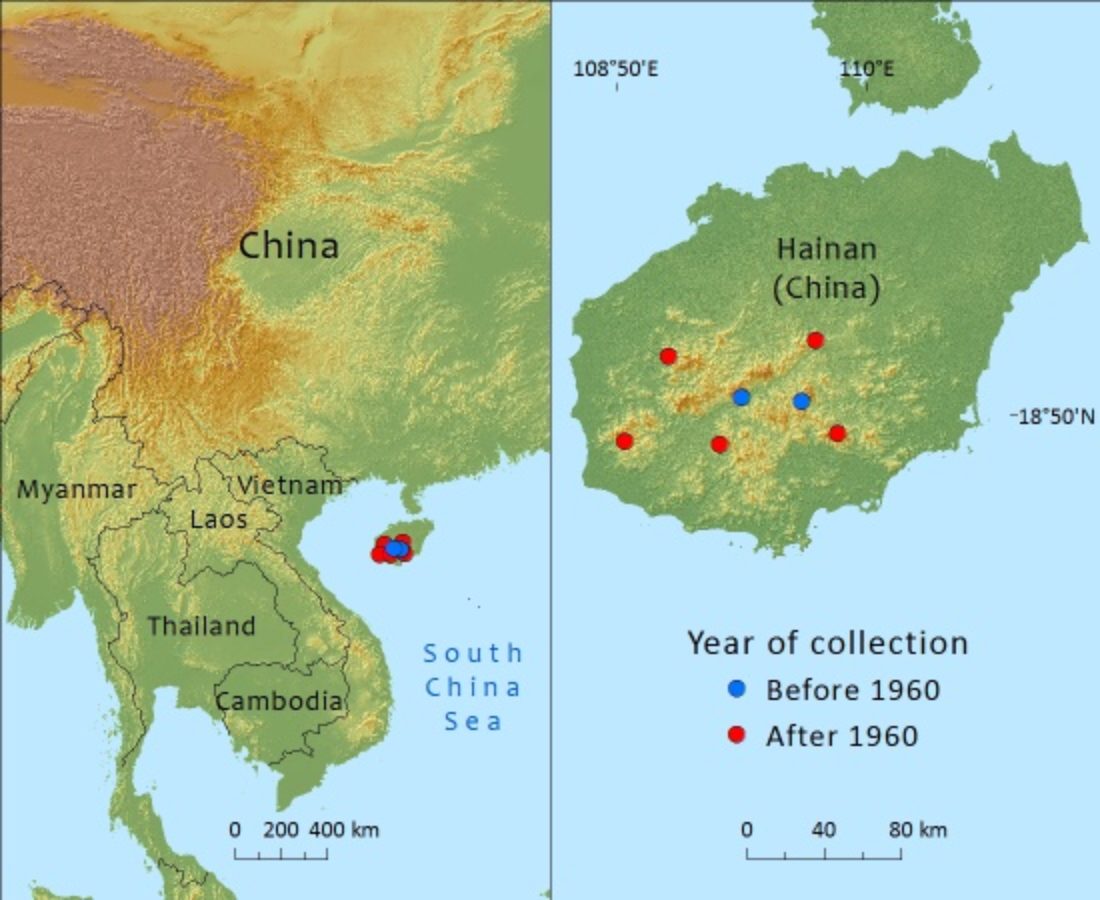Taxaceae
Cephalotaxus hainanensis
Restricted to the island of Hainan, China where the main threat has been exploitation of the bark and leaves for the valuable medicinal extracts. Habitat conversion and deforestation are now the most current threats
Description
Taxonomic Notes
In the Flora of China 4: 87 (1999), this species is treated as a synonym of Cephalotaxus mannii. However, in a note the co-author Robert Mill considered the plants from Hainan to be separable as the species named and described by H.L. Li, i.e. C. hainanensis. Mill gives a statement on morphological differences between the two species. Under this narrower species circumscription it is possible that other specimens from southern China and northern Viet Nam would have to be included under C. hainanensis, with consequences for its distribution and hence conservation status. Ying et al. (2004) map this species as occurring in western Guangdong, Hainan, southeastern and western Guanxi, western Yunnan, and even southeastern Xizang [Tibet]. The populations of Yunnan and Tibet are here treated as belonging to C. mannii. A critical modern revision of the genus to resolve these issues is lacking at present. This assessment treats this taxon as being endemic to Hainan
Human Uses
The bark and leaves contain valuable medicinal compounds such as cephalotaxine and harringtonine. Trees would also have been logged in the past for their timber.
References and further reading
- Huang Guihu, Liang Kunnan, Zhou Zaizhi & Ma Huaming (2012). Resource Status and Conservation of Four Endangered and Valuable Trees in Hainan Island of China in Asia and the Pacific Workshop - Multinational and Transboundary Conservation of Valuable and Endangered Forest Tree Species. Sim Heok-Choh, Syuqiyah Abdul Hamid, Li Mei (editors). Extended Abstracts from the Workshop held in Guangzhou, China, 5–7 December 2011, jointly organized by Asia Pacific Association of Forestry Research Institutions (APAFRI) and Research Institute of Tropical Forestry, Chinese Academy of Forestry (RITF-CAF), in association with the International Union of Forest Research Organizations (IUFRO), Forest Research Institute Malaysia (FRIM) and Korea Forest Research Institute (KFRI). Kuala Lumpur, 2012 - 129 p. - (IUFRO World Series Vol. 30)
- Wang, S. & Xie, Y. (2004). China Species Red List. Vol. 1 Red List. Higher Education Press, Beijing, China.
- Wu, Z. & Raven, P.H. (eds). (1999). Flora of China: Vol.4. Cycadaceae through Fagaceae. Science Press (Beijing) & Missouri Botanical Garden (St. Louis).
- Ying, T.S., Chew, M.L. & Chang, H.C. (2004). Atlas of the Gymnosperms of China. China Science and Technology Press, Beijing.







